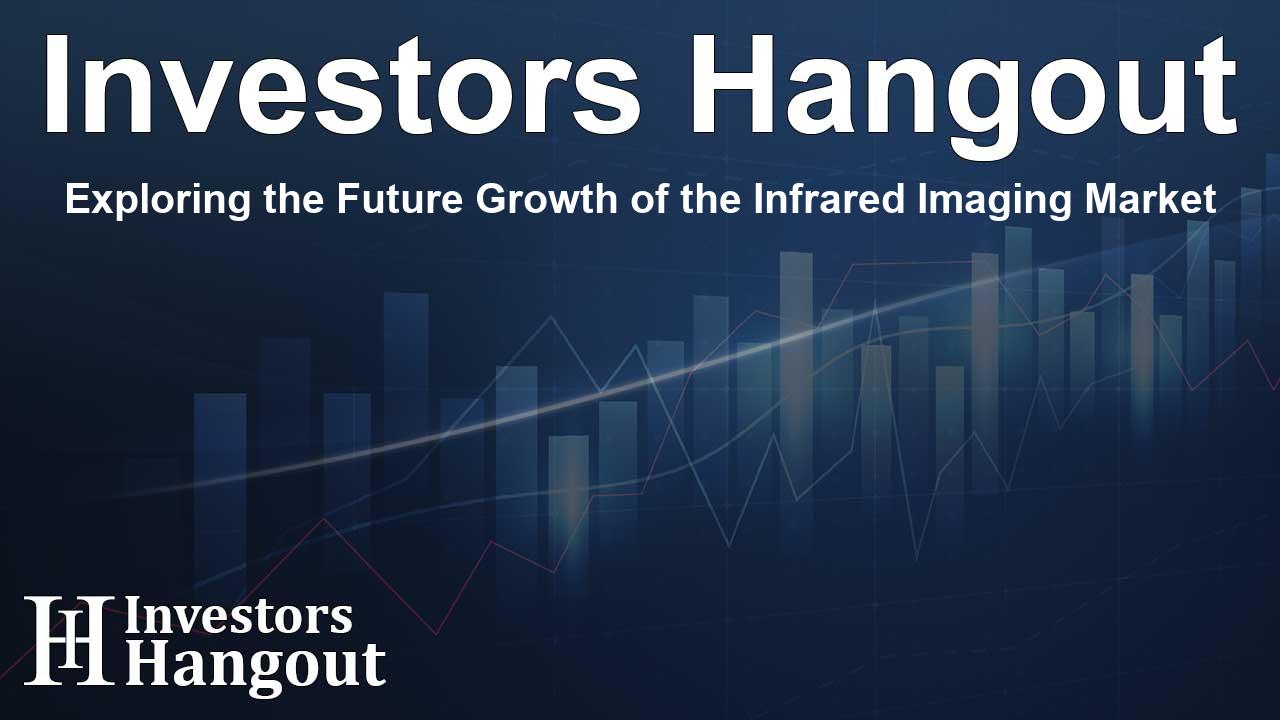Exploring the Future Growth of the Infrared Imaging Market

Growth Potential in the Infrared Imaging Market
The infrared imaging market is on a path to substantial growth, projected to expand from USD 8.61 billion in the near future to an impressive USD 11.65 billion by 2030. This anticipated growth signifies a robust compound annual growth rate (CAGR) of 6.2%. The surge in the market is attributed to innovations in technology, the rise of artificial intelligence in thermal analytics, and expanding applications such as drone-integrated surveillance and autonomous inspection systems.
Key Opportunities Driving Market Demand
The increasing demand for non-contact monitoring and environmental assessments has carved out a significant opportunity for scalable infrared imaging solutions tailored to various sectors. Industries are progressively adopting these smart solutions to enhance operational efficiency and ensure the safety of processes and products. As businesses strive for energy efficiency, infrared imaging technologies are becoming indispensable for predictive maintenance and smart manufacturing.
Thermal Imaging: A Dominant Player
Within this market space, the thermal imaging segment is anticipated to hold a prominent share. Its versatility allows for widespread application in environments where visibility is compromised, such as complete darkness, smoke, or fog. This capability makes thermal imaging invaluable for defense, surveillance, and various industrial inspections. Recent advancements, particularly in uncooled thermal sensors, have helped lower costs, expanding access to both commercial and consumer-grade applications.
The Role of Infrared Cameras
Infrared cameras are essential tools within this market. They are projected to witness significant growth, driven by their utilization in multiple sectors including defense, industrial automation, automotive, and healthcare. With their ability to visualize temperature variations, they facilitate real-time thermal monitoring, essential for effective diagnostics. Additionally, breakthroughs in compact design and sensor technology have enhanced their integration into various devices and applications.
Regional Trends Shaping the Infrared Imaging Market
Asia Pacific is poised to lead the infrared imaging market's growth trajectory, projected to have the highest CAGR during the forecast period. This region’s rapid industrialization and significant defense spending create a fertile ground for infrared technologies. Countries are increasingly utilizing thermal imaging for quality control in manufacturing, equipment maintenance, and in smart city programs for surveillance and public safety.
Challenges and Opportunities
Despite its growth, the infrared imaging market faces challenges, notably the high costs associated with infrared cameras. However, opportunities abound, especially as integration of infrared imaging technology into consumer electronics continues to rise. By addressing these challenges, the market can unlock new segments and applications, further accelerating its growth.
Prominent Players in the Market
Several key players drive innovation in the infrared imaging industry. Companies such as Teledyne FLIR LLC, Fluke Corporation, and L3Harris Technologies are pivotal, providing solutions that cater to diverse application needs. The competitive landscape is marked by ongoing advancements, particularly as companies invest in enhancing their product offerings to meet the evolving demands of the market.
Conclusion
The future of the infrared imaging market looks promising, with significant growth expected over the coming years. As technology evolves and becomes increasingly integrated across various industries, the demand for efficient, reliable, and intelligent imaging solutions will only swell. Expect to see ongoing innovation that shapes the landscape of infrared technologies, ultimately benefiting a plethora of sectors.
Frequently Asked Questions
What is driving the growth of the infrared imaging market?
The market is driven by advancements in AI, increased demand for non-contact monitoring, and energy-efficient solutions across various industries.
Which segment is expected to dominate the infrared imaging market?
The thermal segment is predicted to capture a significant share due to its broad applicability and effectiveness in low visibility conditions.
What role do cameras play in the infrared imaging market?
Cameras are crucial for real-time thermal monitoring and diagnostics, with growing applications in sectors such as healthcare and industrial automation.
Which region is leading the growth in the infrared imaging market?
Asia Pacific is expected to record the highest growth, driven by industrialization and increased defense budgets in key countries.
What challenges does the infrared imaging market face?
The primary challenge is the high cost associated with infrared cameras, which can limit their adoption in certain sectors.
About The Author
Contact Olivia Taylor privately here. Or send an email with ATTN: Olivia Taylor as the subject to contact@investorshangout.com.
About Investors Hangout
Investors Hangout is a leading online stock forum for financial discussion and learning, offering a wide range of free tools and resources. It draws in traders of all levels, who exchange market knowledge, investigate trading tactics, and keep an eye on industry developments in real time. Featuring financial articles, stock message boards, quotes, charts, company profiles, and live news updates. Through cooperative learning and a wealth of informational resources, it helps users from novices creating their first portfolios to experts honing their techniques. Join Investors Hangout today: https://investorshangout.com/
The content of this article is based on factual, publicly available information and does not represent legal, financial, or investment advice. Investors Hangout does not offer financial advice, and the author is not a licensed financial advisor. Consult a qualified advisor before making any financial or investment decisions based on this article. This article should not be considered advice to purchase, sell, or hold any securities or other investments. If any of the material provided here is inaccurate, please contact us for corrections.
